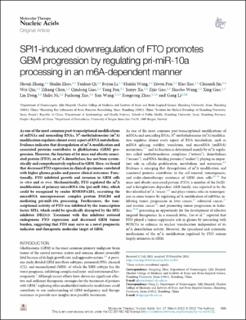| dc.contributor.author | Zhang, Shouji | |
| dc.contributor.author | Zhao, Shulin | |
| dc.contributor.author | Qi, Yanhua | |
| dc.contributor.author | Li, Boyan | |
| dc.contributor.author | Wang, Huizhi | |
| dc.contributor.author | Pan, Ziwen | |
| dc.contributor.author | Xue, Hao | |
| dc.contributor.author | Jin, Chuandi | |
| dc.contributor.author | Qiu, Wei | |
| dc.contributor.author | Chen, Zihang | |
| dc.contributor.author | Guo, Qindong | |
| dc.contributor.author | Fan, Yang | |
| dc.contributor.author | Xu, Jianye | |
| dc.contributor.author | Gao, Zijie | |
| dc.contributor.author | Wang, Shaobo | |
| dc.contributor.author | Guo, Xing | |
| dc.contributor.author | Deng, Lin | |
| dc.contributor.author | Ni, Shilei | |
| dc.contributor.author | Xue, Fuzhong | |
| dc.contributor.author | Wang, Jian | |
| dc.contributor.author | Zhao, Rongrong | |
| dc.contributor.author | Li, Gang | |
| dc.date.accessioned | 2023-03-15T13:09:58Z | |
| dc.date.available | 2023-03-15T13:09:58Z | |
| dc.date.created | 2022-05-11T13:09:42Z | |
| dc.date.issued | 2022 | |
| dc.identifier.issn | 2162-2531 | |
| dc.identifier.uri | https://hdl.handle.net/11250/3058453 | |
| dc.description.abstract | As one of the most common post-transcriptional modifications of mRNAs and noncoding RNAs, N6-methyladenosine (m6A) modification regulates almost every aspect of RNA metabolism. Evidence indicates that dysregulation of m6A modification and associated proteins contributes to glioblastoma (GBM) progression. However, the function of fat mass and obesity-associated protein (FTO), an m6A demethylase, has not been systematically and comprehensively explored in GBM. Here, we found that decreased FTO expression in clinical specimens correlated with higher glioma grades and poorer clinical outcomes. Functionally, FTO inhibited growth and invasion in GBM cells in vitro and in vivo. Mechanistically, FTO regulated the m6A modification of primary microRNA-10a (pri-miR-10a), which could be recognized by reader HNRNPA2B1, recruiting the microRNA microprocessor complex protein DGCR8 and mediating pri-miR-10a processing. Furthermore, the transcriptional activity of FTO was inhibited by the transcription factor SPI1, which could be specifically disrupted by the SPI1 inhibitor DB2313. Treatment with this inhibitor restored endogenous FTO expression and decreased GBM tumor burden, suggesting that FTO may serve as a novel prognostic indicator and therapeutic molecular target of GBM. | en_US |
| dc.language.iso | eng | en_US |
| dc.publisher | Elsevier | en_US |
| dc.rights | Attribution-NonCommercial-NoDerivatives 4.0 Internasjonal | * |
| dc.rights.uri | http://creativecommons.org/licenses/by-nc-nd/4.0/deed.no | * |
| dc.title | SPI1-induced downregulation of FTO promotes GBM progression by regulating pri-miR-10a processing in an m6A-dependent manner | en_US |
| dc.type | Journal article | en_US |
| dc.type | Peer reviewed | en_US |
| dc.description.version | publishedVersion | en_US |
| dc.rights.holder | Copyright 2022 The Author(s) | en_US |
| cristin.ispublished | true | |
| cristin.fulltext | original | |
| cristin.qualitycode | 1 | |
| dc.identifier.doi | 10.1016/j.omtn.2021.12.035 | |
| dc.identifier.cristin | 2023544 | |
| dc.source.journal | Molecular Therapy - Nucleic Acids | en_US |
| dc.source.pagenumber | 699-717 | en_US |
| dc.identifier.citation | Molecular Therapy - Nucleic Acids. 2022, 27, 699-717. | en_US |
| dc.source.volume | 27 | en_US |

